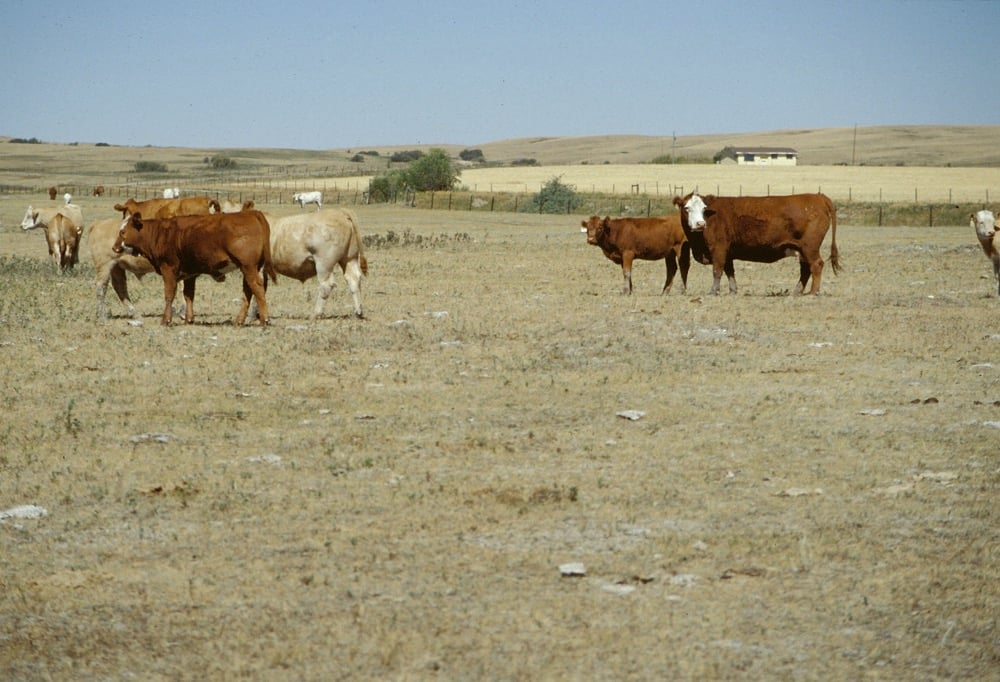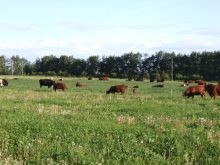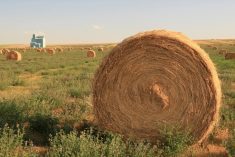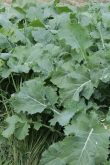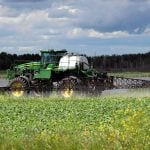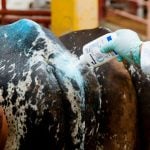A lack of carryover of feed from 2018, combined with another summer of drought, has taken its toll in Manitoba’s Interlake region this year, triggering a declaration of agricultural disaster in 12 municipalities.
The RMs of Alonsa, Armstrong, Bifrost-Riverton, Coldwell, Ethelbert, Fisher, Grahamdale, Lakeshore, McCreary, Ste. Rose, West Interlake and Woodlands announced the motion in a news release Thursday, the Manitoba Co-operator reports. The municipalities want the province to start talks with the federal government about assessing the situation under the AgriRecovery framework. The municipalities are also asking that an AgriRecovery program be used to offset feed and freight costs and to compensate producers for drilling wells or hauling water to livestock. Read the full story here.
Read Also

Why post-drought pasture management matters for beef farmers
Pasture management is always important, but it is especially important following a drought. During these challenging periods, pastures may suffer…
Producers looking to buy or sell hay and feed should check online listings, including:
- The Manitoba hay listing.
- Dedicated Facebook pages such as Manitoba Hay and Feed for Buy/Sell, Hay/Feed for Sale in Saskatchewan, Alberta and Manitoba, Alberta Hay and Feed Directory and Feed and Forage Wanted For Sale on Facebook.
- Cast a wider net with the Hay Exchange, which includes listings from across Canada and the U.S.
- Websites such as eBrandon and Kijiji.
Alberta
Producers have been hampered by either a lack of or abundance of moisture, notes the latest crop report. Producers in some areas are struggling with first cut and others are uncertain if a second cut will be had. Provincially, 10 per cent of hay is rated as poor, 29 per cent fair, 47 per cent good and 14 per cent excellent. Seventeen per cent of pasture is rated poor, 33 per cent fair, 38 per cent fair and 12 per cent excellent.
In the south, 28 per cent of pastures are rated poor, 37 rated fair, and 35 per cent rated good and excellent. Eighteen per cent of hay is rated poor, 39 per cent fair, with 43 per cent rated as good and excellent. Dryland harvest is underway, with 24 per cent combined and eight per cent swathed. Dryland yields are below average. Irrigated yields for spring wheat, durum and barley are above the five-year average.
In central Alberta, 19 per cent of pastures are rated poor, 42 fair and 39 rated as good. Hay ratings are now at 14 per cent poor, 28 per cent fair and 58 per cent rated as good and excellent. Harvest progress is at three percent. Dryland yields for all crops look to be above the averages. Irrigated spring wheat yields look to be a little below the provincial average but on par with the five-year average.
In the northeast, two per cent of pastures are rated poor, 14 per cent fair, 46 per cent rated as good with 38 per cent excellent. Hay ratings are now at five per cent poor, 21 per cent fair, with 74 per cent rated as good and excellent. Harvest progress is at three per cent. Yields for all major crops look to be above the provincial, five- and 10-year averages.
There are no reports of pastures rated as poor in the northwest. Fourteen per cent of pastures are rated fair, 42 per cent are rated good and 45 per cent excellent. There are also no reports of poor hay, 15 per cent are rated fair, 65 per cent rated good, and 20 per cent rated excellent. Harvest hasn’t started, and producers are concerned about being able to get into wet fields. Spring wheat yields are expected to be above average, but barley looks to be below average.
Seven per cent of pastures are rated poor in the Peace, 38 per cent fair, 46 per cent rated as good and nine per cent excellent. Hay ratings are now at seven per cent poor, 41 per cent fair, with 52 per cent rated as good and excellent. Harvest hasn’t started. Barley yield is anticipated to be below average. Spring wheat is below the provincial average but above the five- and 10-year averages.
Saskatchewan
Saskatchewan farmers have just started harvest. Provincially, farmers have six per cent of the crop combined, which is behind the five-year average of 16 per cent, notes the latest crop report.
In the southeast, hayland and pasture topsoil moisture conditions are rated as 81 per cent adequate, 15 per cent short and four per cent very short. Pasture conditions are currently rated as 55 per cent good, 30 per cent fair, 12 per cent poor and three per cent very poor.
In the southwest, topsoil moisture on the hayland and pasture is rated as 65 per cent adequate, 32 per cent short and three per cent very short. Pasture conditions are currently rated as 40 per cent good, 42 per cent fair, 16 per cent poor and two per cent very poor.
In east-central Sask., hayland and pasture topsoil moisture is rated as three per cent surplus, 79 per cent adequate and 13 per cent short and five per cent very short at this time. Across the region, pasture conditions are currently rated as one per cent excellent, 27 per cent good, 54 per cent fair, 14 per cent poor and four per cent very poor at this time. Recent rain, though not good for the crops, was beneficial to the pastures.
Hayland and pasture topsoil moisture in west-central Sask. is rated as 52 per cent adequate, 37 per cent short and 11 per cent very short. Pasture conditions are rated as 13 per cent good, 50 per cent fair, 21 per cent poor and 16 per cent very poor.
In the northeast, hayland and pasture topsoil moisture is rated as 12 per cent surplus, 80 per cent adequate, seven per cent short and one per cent very short. Pasture conditions are in the region are rated as two per cent excellent, 62 per cent good, 27 per cent fair and nine per cent poor.
And in the northwest, hayland and pasture topsoil moisture is rated as 82 per cent adequate and 18 per cent short. Pasture conditions are rated as 21 per cent excellent, 40 per cent good, 24 per cent fair and 15 per cent poor.
Manitoba
The most recent Manitoba crop report notes that recent rains have recharged soil in large areas of the province, but that rain has come too late to improve crop yields.
In the southwest, pastures are entering their final stages before dormancy, looking much greener than weeks before. Most haying is complete. Pastures and fall grazing land will benefit from the recent rain. Reports of feed shortages still ongoing due to 50 per cent of normal hay yields in most areas. Greenfeed and silage crops look to be average yield or higher.
In the northwest, pastures have turned brown. With the exception of The Pas where yields are average, hay yields across the region are very low and feed supplies are very tight. In the Roblin and Swan River, a few alfalfa fields remain to be harvested as first cut and quality expected to be poor. Greenfeed and cereal silage harvest is winding down with average yields. Producers are baling pea and cereal straw and grass seed residue. Silage corn across the region is still in need of moisture for cob development. Precipitation over the weekend was very welcome.
Meanwhile, in central Manitoba, cereal straw is being dropped and baled for livestock. Grasshoppers have been damaging pasture, hay and crops. Hay yields were well below average. There are concerns about timing alfalfa cutting four to five weeks before a killing frost, as growth may not be sufficient to recharge root reserves if frost comes in early- to mid-September. Beef producers are baling straw, greenfeed, silage and other forages. Some crops planted as grain have been converted and harvested as silage or baled.
In eastern Manitoba, haying is mostly done, with yields 50 to 60 per cent of normal, but some are reporting 25 per cent of normal. Winter feed supplies were rated as 60 per cent adequate for hay, 80 per cent adequate for straw, 70 per cent for greenfeed and 80 per cent adequate for feed grain.
Finally, in the Interlake, producers are baling more cereal straw than usual. Silage corn yields will be lower than normal, with early estimates pegging yield at five to 12 tonnes per acre. Almost all pastures have been grazed down and are rated as poor to very poor. Rain may extend some pasture grazing. However, feeding has begun in the northwest part of the region. It’s likely that producers will be sending more animals to market due to the feed shortage.
Feed Watch will be back in two weeks.

